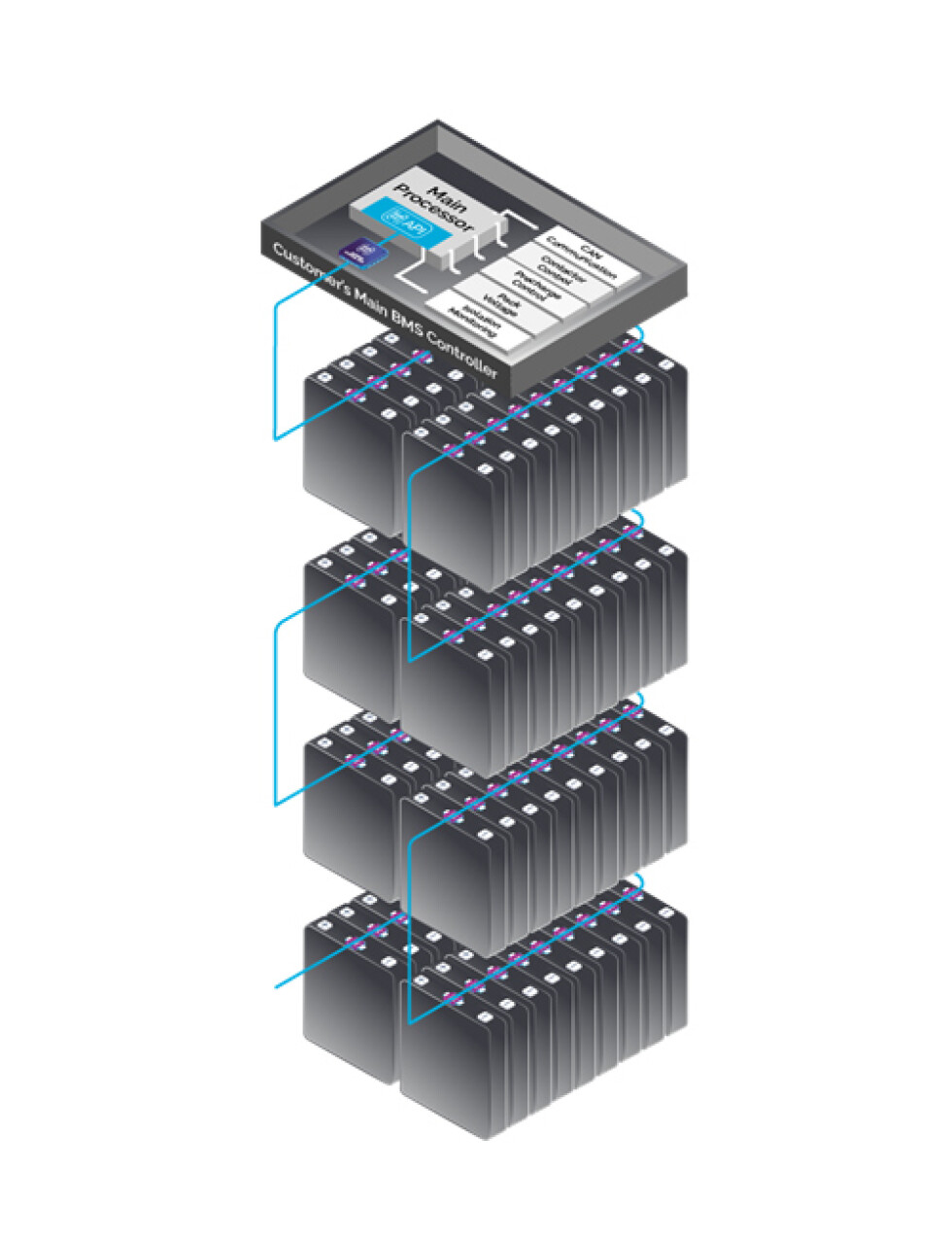Dukosi Cell Monitoring System (DKCMS™)
Simpler, safer, smarter batteries start with the cell
Revolutionizing the performance, safety, and sustainability of high performance batteries, the Dukosi Cell Monitoring System (DKCMS™) introduces several innovations.
A Dukosi DK8102 Cell Monitor is installed on each cell, which captures accurate measurements of Voltage and Temperature. Each Cell Monitor uses Dukosi’s proprietary C-SynQ® communication protocol to synchronously send data to a Dukosi DK8202 System Hub using near field RF via a single bus antenna placed over the battery pack cells. The System Hub typically resides on the same PCB as the BMS host processor, and communicates using the DKCMS library.
DKCMS has been architected expressly for high performance batteries. It is designed to be extremely robust, and power efficient.
Products

DKCMS Technology Overview
Dukosi C-SynQ® communications
Unlike other intra-battery communication systems, C-SynQ is designed from the ground-up for safety-critical environments in large battery (multi-node) systems. It provides deterministic communication with essential synchronicity of data from all cells, ensuring the BMS can make optimal decisions, even in dynamic power events.
Read more about Dukosi C-SynQ >
Contactless connectivity

C-SynQ communication between Cell Monitors and the System Hub is typically paired with Dukosi’s near field communications, and a single bus antenna. This innovation is up to 2x more reliable and uses 10x fewer components than a typical wired BMS design by removing the need for the complex wiring harness and eliminating many of the vibration-sensitive connections.
With inherent electrical isolation and security throughout the near field network, Dukosi’s contactless solution delivers wired-like performance and star-network behavior.
Compared to far field wireless designs, it offers noteworthy advantages such as more robust communication with predictable latency, wired-like network security, and a considerably simpler battery design and development process, reducing costs and accelerating time to market.
Scalability at the cell-level

A System Hub can address up to 216 cells, allowing the creation of even the largest capacity battery packs. Forgoing traditional battery modules enables scalability at the cell level, allowing battery designers to add or remove single cells rather than dozens at a time. This gives product developers the ability to adapt fast to changing market conditions.
DKCMS can be scaled without requiring redesign and recertification, simplifying development and manufacturing while still ensuring network security against unauthorized devices when deployed in products. This flexible approach allows DKCMS to easily scale from electric vehicles, accommodating global market differences, to utility-scale stationary battery energy storage systems, by providing better uptime, a safer and more robust architecture, and TCO advantages.